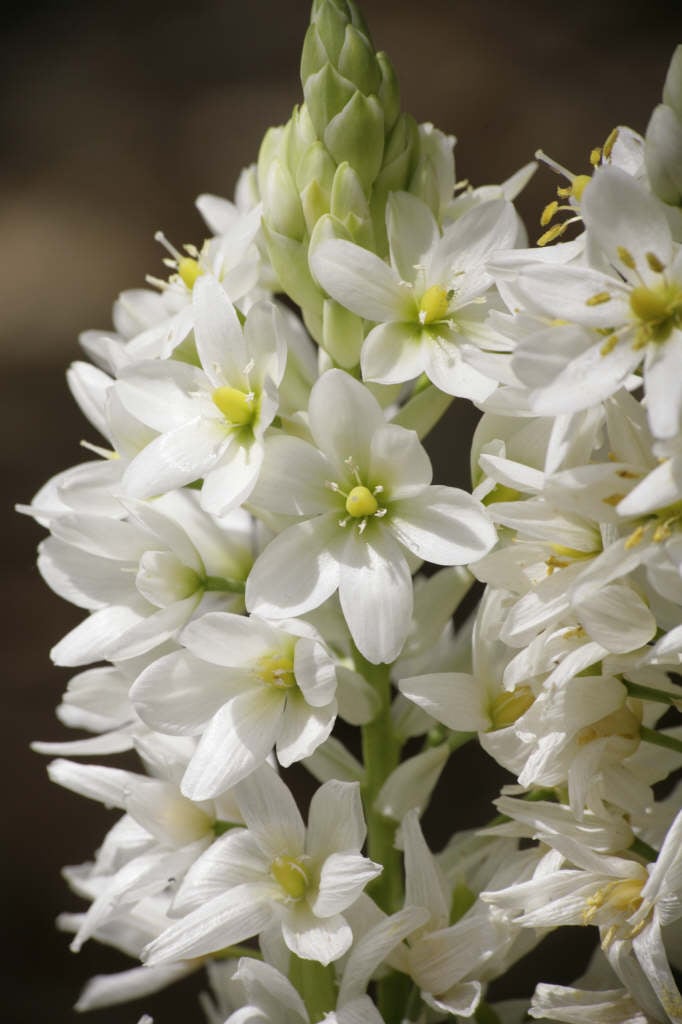Size
Ultimate height
0.5–1 metresTime to ultimate height
1–2 yearsUltimate spread
0–0.1 metreGrowing conditions
Moisture
Well–drainedpH
Acid, Alkaline, NeutralColour & scent
| Stem | Flower | Foliage | Fruit | |
| Spring | White | Green | ||
|---|---|---|---|---|
| Summer | White | Green | ||
| Autumn | ||||
| Winter |
Position
- Full sun
- Partial shade
Aspect
West–facing or South–facing
Exposure
Sheltered Hardiness
H2Botanical details
- Family
- Asparagaceae
- Native to GB / Ireland
- No
- Foliage
- Deciduous
- Habit
- Bushy
- Potentially harmful
- Harmful if eaten. Wear gloves and other protective equipment when handling TOXIC to pets if eaten (dogs, cats, rabbits, rodents) - see the HTA guide to potentially harmful plants for further information and useful contact numbers
- Genus
Ornithogalum are bulbous perennials with linear or strap-shaped basal leaves and racemes, sometimes contracted, of star-shaped or cup-shaped, white, yellow or orange flowers
- Name status
Correct
- Plant range
- S Africa (Cape)
How to grow
Cultivation
Plant in spring for summer flowering; in growth water freely and lift after flowering - keep frost free over winter. Indoors and under glass grow in large containers of peat-free, loam-based potting compost in full light with shade from hot sun, when in growth water freely, keep dry when dormant and repot annually in spring; can also be planted indoors or under glass in autumn for spring flowering
Propagation
Propagate by seed in containers in a cold frame in autumn or spring; for bulb propagation remove offsets when dormant
Suggested planting locations and garden types
- Patio and container plants
Pruning
No pruning required
Pests
Generally pest-free
Diseases
Generally disease-free
Get involved
The Royal Horticultural Society is the UK’s leading gardening charity. We aim to enrich everyone’s life through plants, and make the UK a greener and more beautiful place.
